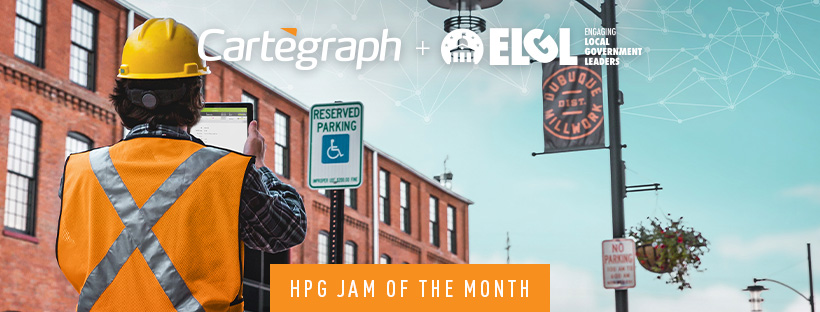
This guest blog is by ELGL member Cori Burbach, the Assistant City Manager in Dubuque, Iowa.
 That was one of my assigned duties after being appointed city manager of the City of Dubuque. But, what did that mean exactly? Up until that point in my government career, high performing meant things like financial accountability. Standard operating procedures. Performance measurement systems. Quality customer service. All things that could help build productive operations.
That was one of my assigned duties after being appointed city manager of the City of Dubuque. But, what did that mean exactly? Up until that point in my government career, high performing meant things like financial accountability. Standard operating procedures. Performance measurement systems. Quality customer service. All things that could help build productive operations.
What I’ve learned, is that you can’t have any of the above if you don’t first have effective and innovative teams. In just two short years, I’ve learned so much about this first tenet of high-performance government (HPG). I’ve learned that if you’re not focusing on it—if you don’t have measurable ways of defining that phrase—you might as well not even start thinking about any of the other tenets: efficient processes, measurable results, clear and accountable government, or proactive engagement of citizens.
Here are my 5 tips for beginning to build your own effective and innovative teams:
Define your success indicators.
Sure, if we’re talking about reducing your debt ratio or increasing life expectancy, that’s easy to quantify. But, how do you measure “improving teamwork” in an organization? Ask a handful of your peers and you’ll likely get great examples of what teamwork looks like—not necessarily an outcome you can track progress toward.
Though it’s slightly less tangible, improving the effectiveness and innovation of your teams is something your team should be measuring. And, defining your targets will outline exactly how you’ll get there. For example, our first high-performance government employee survey revealed that our staff generally felt like they had at least one coworker who had their back. (Yay!) But, that sense of connectedness dropped off significantly when it came to relationships outside of their department. (Definitely an opportunity for improvement.)
It’s no surprise that our firefighters or parks staff might not feel the same connectedness to the city organization that they feel toward their department’s mission.
But, when we get stuck in silos, we fail to see the big picture. We see a simple process to procure a permit and forget the resident had to talk to two departments in two separate buildings before they got to us.
Or, we fail to realize that reassigning mowing assignments will not only reduce duplicative work from multiple departments but also improve safety and save money.
So, how are we measuring the success of this tenet: building effective and innovative teams? I’ll know I’m successful when employees respond that staff in other departments have their back, and when our organization shifts to more project-based teams instead of our siloed departments.
Get ready to change your organizational behavior.
Ever heard the saying employees don’t leave jobs, they leave their bosses? I’ll take it a step further: they leave a toxic work culture.
Bosses often lead the way in setting an organizational culture, but if you’re going to shift to a culture of teamwork, it’s got to be all in for everyone.
For the City of Dubuque, that means everyone from the city manager to our foremen are working toward building teams around individual strengths, not job titles. These teams will be for short-term projects—like updating our purchasing policy—to more permanent, cross-departmental functions—like our equity communication team.
Training won’t change anything.
When we kicked off our 2-day high-performance government training, the skeptics in the room wondered aloud, “How long will this phase last?” Shifting the culture of the organization takes time, and it takes a daily commitment to the values you establish.
For our city, we walk this talk when our HPG ambassadors come together for bi-monthly lunch and learns. These meetings give our team a chance to practice our skills together, hear case studies from teammates, and learn about new ideas. But, it won’t take hold until we’re using the same language in meetings, holding each other accountable, and practicing what we’ve learned.
Fail often to succeed faster.
Risk-taking? In local government? Where we’re stewards of precious tax dollars? Yes! In local government, we get stuck in patterns of “what works” while we’re putting out the fires of the day. Sometimes, we forget that risk-taking is important work: it’s where we try things out, build upon each other’s work and learnings, and get to innovative solutions faster.
This is where high-performing teams provide a safety net for each other. Use pilot programs to your advantage—disaggregating knowledge and aggregating risk.
Which is easier, trying a new way of processing timesheets with a single department, integrating their feedback before you roll it out to the entire organization? Or, rolling out a process that you thought would work, one tiny flaw brought the whole thing down, and now no department anywhere wants to change things ever again?
We’ve found it’s also essential to recognize your risk-taskers as helping the entire organization form solutions. In our employee awards program, the criteria intentionally state that we will recognize individuals advancing our organization by thinking outside of the work and willing to try something new—regardless of the result.
Build equitable operations.
As local government leaders, the challenge of our time is equity. The City of Dubuque added this tenet to our high-performance government model not only because seeking equity is the right thing to do, but also because diversity is a smart business solution. Diversity of all kinds in our teams, whether that’s race, sexual orientation, age, life story, problem-solving approach, or communication style, will get our team to a better solution.
Better could be faster. Or meeting the needs of our customers. It could be creating something more complete or anticipating the next challenge before it even happens. But, as a group, diversity will enhance your perspective, improve your creativity, and make you smarter.
A few words of caution on this one: avoid tokenism. Small numbers of certain demographics in your organization can mean someone is picked for every team and quickly becomes overwhelmed.
If this does happen, don’t stop. Take it as a sign that you need to build your bench through recruitment and retention strategies and invest in leadership development so that that one individual transforms into many.
In the end, building effective and innovative teams is an important, yet often overlooked strategy that will move your organization forward on the path towards becoming a more high-performing government. It’s foundational in moving us toward better solutions, it will help us solve complex problems in a rapidly-changing world, and it might even help us all to have a little more fun at our jobs.
